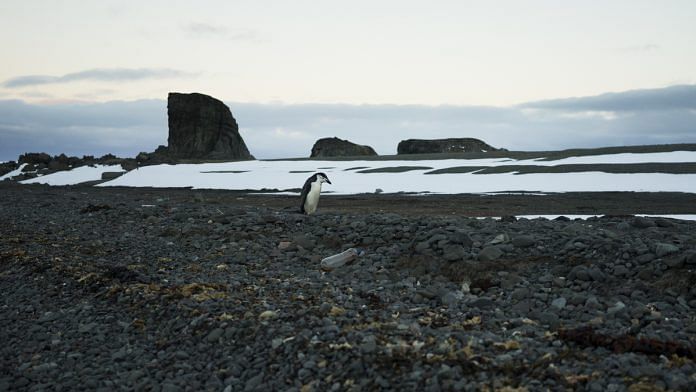Remains of rainforest discovered under Antarctic ice
Researchers have discovered the remains of an ancient rainforest in Antarctica, with preserved fossil roots, pollen, spores, and other plant material. The rainforest was situated in West Antarctica about 90 million years ago during the Cretaceous period. The sea-surface temperatures then were as hot as 35 degrees Celsius, with sea levels almost 200 metres higher than today. The remains were found under the ice, inside of a sediment core that was collected from the continent in 2017. More in Live Science.
Three human-like species lived side-by-side in ancient Africa
Three different early human species were living geographically close together in Africa around two million years ago, according to a new research. How much did these species interact with each other is still unknown. The findings also reveal the earliest known example of a Homo erectus, the ancestral species of all humans.
The findings were made in the Drimolen Cave Complex in South Africa, which has been the source of many human fossils before. Until now, scientists had thought that Homo erectus emerged in Eastern Africa but the new findings show that they probably came from the southern part. Read more about it here.
Ancient Mars had multiple sources of water
Analysis of the water composition in two Martian meteorites has revealed that the planet received water from at least two different sources. Authors of the study have found that two geochemically different types of rocks had water with various D/H or deuterium to hydrogen ratios, indicating a different origin for each.
Deuterium is a heavy isotope of hydrogen, and the ratio of the two elements gives clues into the origin and geological history of a rock.
The discrepancy suggests that unlike earth or the moon, mars didn’t have a global magma ocean. More about it here.
Mass extinction happened differently for land, sea animals
The mass extinction that occurred at the end of the Permian period, 250 million years ago, is the largest known such event, killing up to 70 per cent of all terrestrial and almost 95 per cent of marine life. The cause for this extinction was a series of global volcanic eruptions occurring over a million years in the Siberian region.
But unlike earlier believed, the extinctions on land and sea didn’t occur simultaneously.
The ecosystem change in the northern hemisphere also didn’t happen like in the southern. The start of the collapse of terrestrial ecosystems happened almost 300,000 years before marine ecosystems began to die. Read more about it here.



